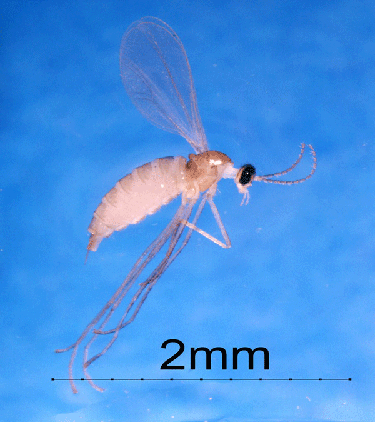Swede Midge
Common Name: Swede Midge
Scientific Name: Contarinia nasturtii
Origin: Europe and southwestern Asia
Description
The swede midge is a small, light brown fly. They begin to emerge in May, lasting until mid-June. The adult females lay about 100 eggs throughout their short lifetime of 1 to 4 days. The larvae hatch after 3 days, when they then begin to feed on plants. Plants include cruciferous vegetable crops such as cabbage, cauliflower, broccoli, and Brussels sprouts. Also, canola, collard, horseradish, kale, mustard, rutabaga, turnip, and radish
Habitat
These insects are dependent on a moist habitat, such as irrigated agricultural land.
Threat
Swede midge larvae can be detrimental to plant tissue, especially that of vegetable crops. As they feed, they produce a secretion that breaks down the surface of the plant and liquefies the cell contents. This results in damage to the growing tips. Crops affected by the swede midge include cabbage, cauliflower, broccoli, brussel sprouts, and others.
Management
Because use of insecticides is a difficult control method, the most effective management form is preventing the further spread of this species.
Distribution: View Map
The swede midge is found throughout Ontario, Quebec, and New York State. It is present in the FL-PRISM.




